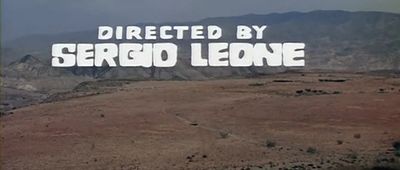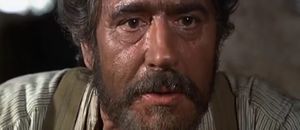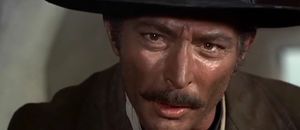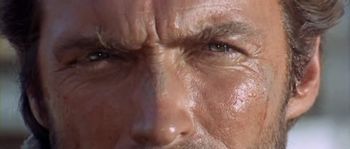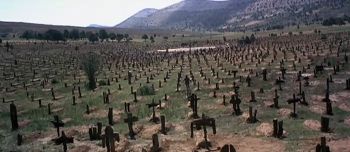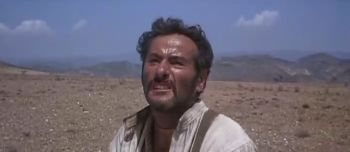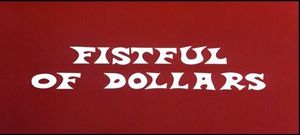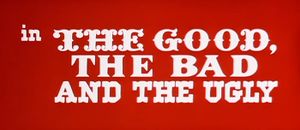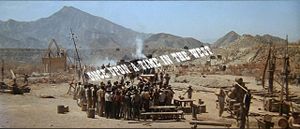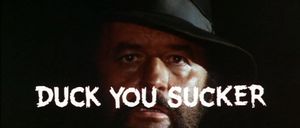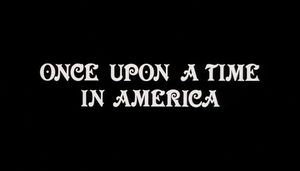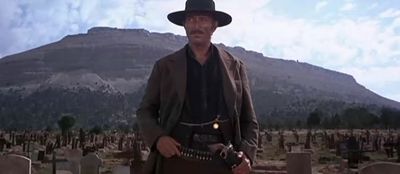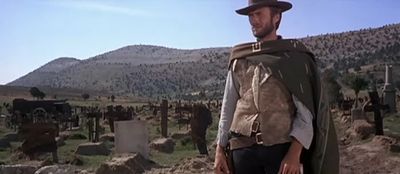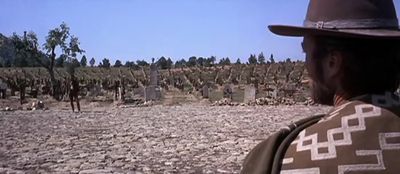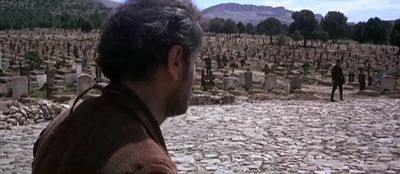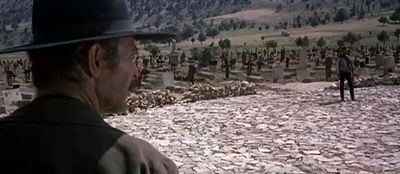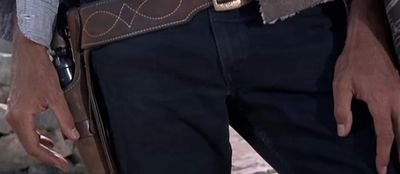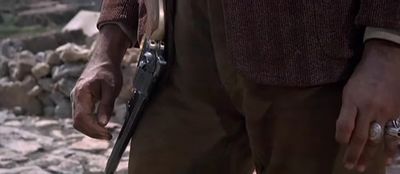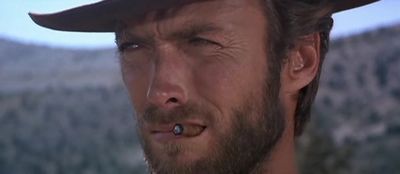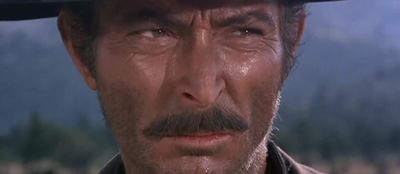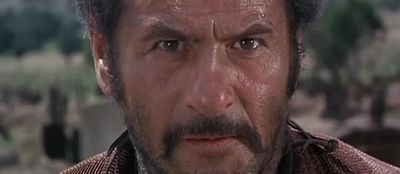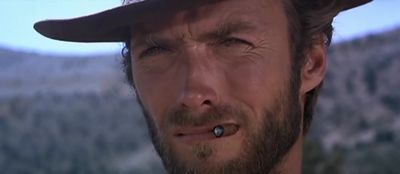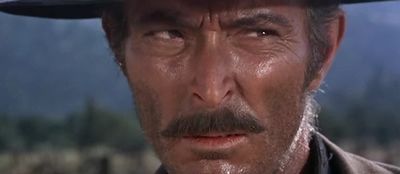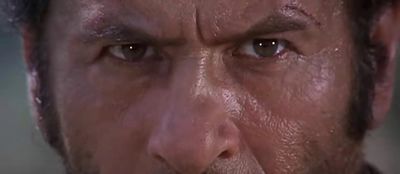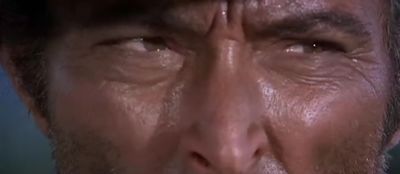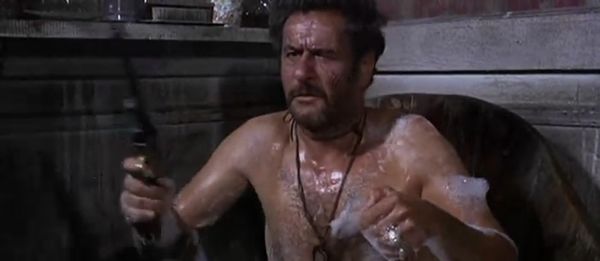Sergio Leone
[a panoramic long shot of what is apparently supposed to be a valley in the American West; nothing happens; the silence is finally broken by an incredibly fake-sounding gunshot]
[khk-klck]
[ka-PYE-E-E-EW!]
Sergio Leone
[khk-klck]
[ka-PYE-E-E-EW!]
Was an influential Italian filmmaker
[khk-klck]
[ka-PYE-E-E-EW!]
Known for inventing
[khk-klck]
[ka-PYE-E-E-EW!]
The “Spaghetti Western” subgenre;
[khk-klck]
[ka-PYE-E-E-EW!]
His unique visual aesthetic
[khk-klck]
[ka-PYE-E-E-EW!]
That was characterized by
[khk-klck]
[ka-PYE-E-E-EW!]
Extreme close-ups
[khk-klck]
[ka-PYE-E-E-EW!]
Juxtaposed with
[khk-klck]
[ka-PYE-E-E-EW!]
Long, panoramic shots;
[khk-klck]
[ka-PYE-E-E-EW!]
His preference for
[khk-klck]
[ka-PYE-E-E-EW!]
Morally ambiguous characters;
[khk-klck]
[ka-PYE-E-E-EW!]
His frequent collaboration
[khk-klck]
[ka-PYE-E-E-EW!]
With men like
[khk-klck]
[ka-PYE-E-E-EW!]
[khk-klck]
[ka-PYE-E-E-EW!]
And
[khk-klck]
[ka-PYE-E-E-EW!]
Ennio Morricone;
[khk-klck]
[ka-PYE-E-E-EW!]
And his films’
[khk-klck]
[ka-PYE-E-E-EW!]
[khk-klck]
[ka-PYE-E-E-EW!]
Opening credit sequences.
[khk-klck]
[ka-PYE-E-E-EW!]
Early Life
GRUFF SPANISH-LOOKING MAN (words don’t match lips): Hello, amigo! What can I do for you today?
MORALLY AMBIGUOUS CAUCASIAN (words do match lips): Tell me about the early life of Italian director Sergio Leone.
GRUFF SPANISH-LOOKING MAN: I’m afraid I don’t know anything about that.
MORALLY AMBIGUOUS CAUCASIAN: [draws gun] Tell me about the early life of Sergio Leone!
GRUFF SPANISH-LOOKING MAN: I don’t know anything about—
[ka-PYE-E-E-EW!]
[The Spanish-looking man’s hat is shot off]
MORALLY AMBIGUOUS CAUCASIAN: What do you know?
GRUFF SPANISH-LOOKING MAN: He was…he was born in Rome…to parents that…that were…involved in cinema!
MORALLY AMBIGUOUS CAUCASIAN: What else?
GRUFF SPANISH-LOOKING MAN: He attempted to go into law before becoming a director! And his first feature film was The Colossus of Rhodes!
MORALLY AMBIGUOUS CAUCASIAN: Hmmm….
[Morally Ambiguous Caucasian rides into the distance to the tune of his own personal leitmotif made up of a guitar, a pan flute, and a small chorus of men yelling “Ah-yah ah-yah ah-yah!”]
Cinematic Motifs
Extreme Close-Ups
Sergio Leone would often film things extremely close up. He typically favored using this technique with peoples’ faces and hands, though he also did it in other situations as well.
Extreme Long Shots
Sergio Leone also favored shots from extremely far away. He typically filmed landscapes and Mexican standoffs in this manner.
Juxtaposing Extreme Close-Ups and Extreme Long Shots
Leone would sometimes juxtapose extreme close-ups with extreme longs shots.
He would do this either by using deep focus to achieve both a close-up and long shot simultaneously, or by alternating between panoramic and close-up shots.
Clint Eastwood’s Poncho
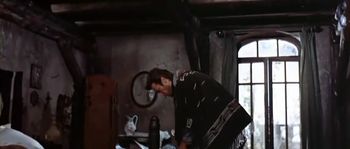
Sergio Leone also had an attachment to the poncho actor Clint Eastwood wore in A Fistful of Dollars. Leone liked the poncho so much that it’s also featured in For a Few Dollars More and The Good, the Bad, and the Ugly.
Selected Filmography
A Fistful of Dollars
A Fistful of Dollars is a film about a morally ambiguous though ultimately good-hearted lone gunman who comes to a town dominated by two rival gangs. It is actually an unauthorized remake of Akira Kurosawa’s film Yojimbo, which is about a morally ambiguous though ultimately good-hearted lone samurai who comes to a town dominated by two rival gangs. This film marks Leone’s first collaboration with both composer Ennio Morricone and actor Clint Eastwood.
For a Few Dollars More
A morally ambiguous though ultimately vengeful bounty hunter played by Lee Van Cleef teams up with a morally ambiguous though ultimately good-hearted gunman played by Clint Eastwood to hunt down and kill a morally ambiguous though ultimately malicious criminal played by a totally irrelevant actor.
The Good, the Bad, and the Ugly
A morally ambiguous though ultimately good gunman, a morally ambiguous though ultimately bad gunman, and a morally ambiguous though ultimately ugly gunman attempt to find a cache of hidden gold.
Once Upon a Time in the West
A morally ambiguous though ultimately evil gunman played by Henry Fonda is eventually undone by a morally ambiguous though ultimately good Charles Bronson.
Duck, You Sucker
A morally ambiguous though ultimately good-hearted bandit played by Rod Steiger meets a morally ambiguous though ultimately good hearted IRA explosives expert played by James Coburn, and together they get drawn into the Mexican Revolution.
Once Upon a Time in America
Morally ambiguous gangster immigrants do morally ambiguous gangster things.
The Dramatic Final Standoff
CLINT EASTWOOD: Alright.
[he tosses a film reel to the ground]
CLINT EASTWOOD: This is the unedited director’s cut of Once Upon a Time in America. You all know what has to happen.
See Also
